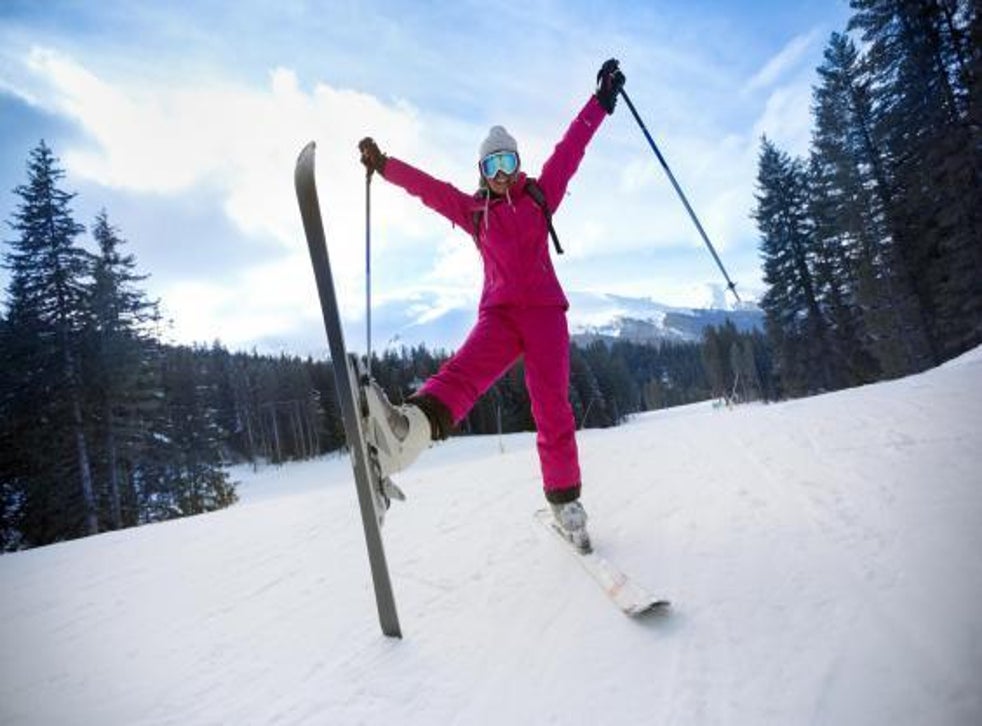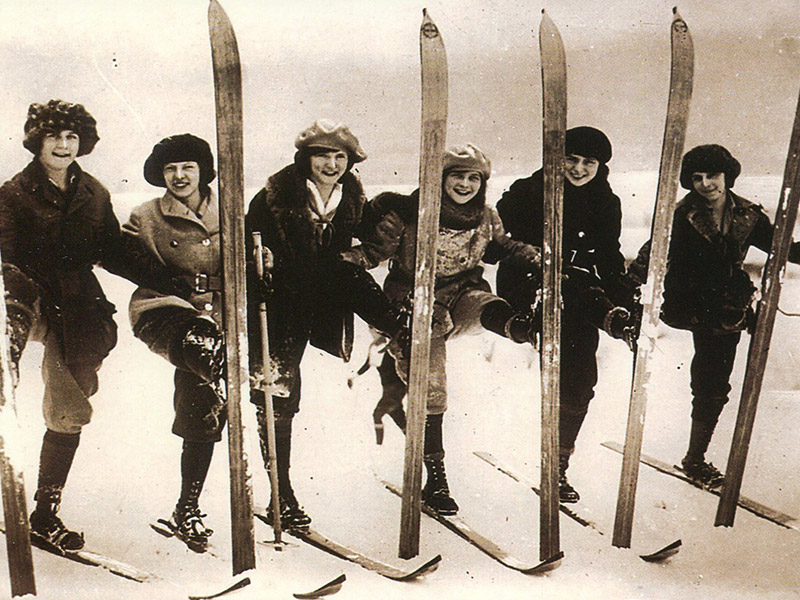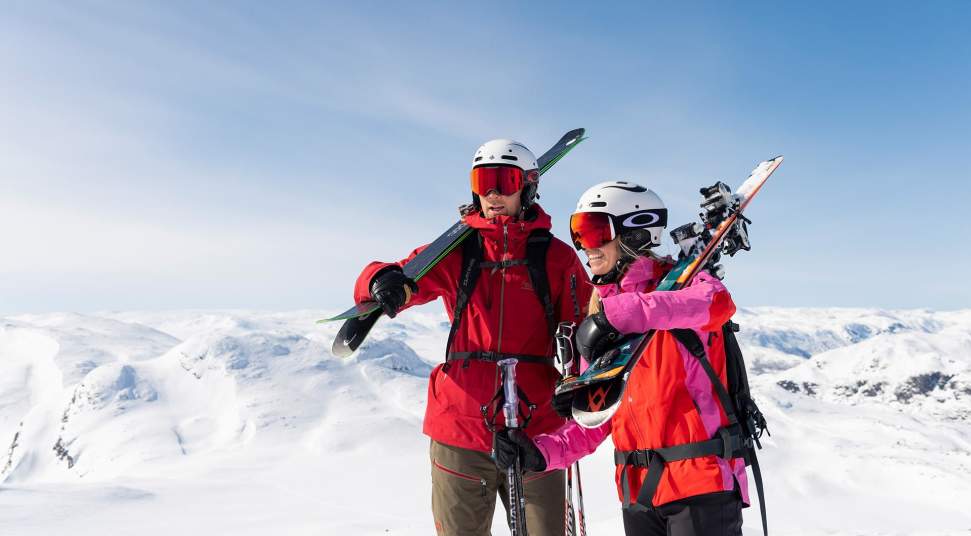
LENGTH
One of the most important things to consider when buying a pair of skis is the length. Ski length is measured in centimeters (cm). The typical rule of thumb is to choose a pair of skis that when standing up straight, are somewhere in between your chin and the top of your head. In reality, there is nothing that will determine the perfect ski length for you, but there are a few things to consider. Your height, ability, and style of skiing all influence what length of skis are appropriate for you.
HEIGHT
Generally speaking, the length of your touring skis should not differ too much from what you typically use at the resort. Some backcountry skiers choose to size down in order to save weight and make the ski feel a little more maneuverable. This makes kick turns easier and can help navigate tight terrain like steep, narrow couloirs. This is perfectly normal, but it’s worth considering what impact this has on your skiing. It’s no good sizing down for an easier time on the skin track if the turns are no fun! If you find yourself between sizes, erring on the shorter side for your touring ski will usually be a good bet.
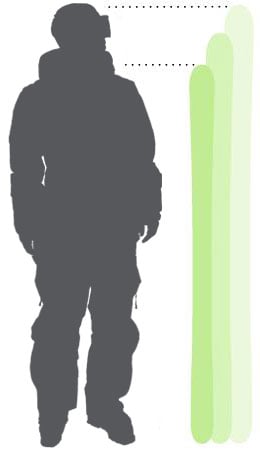
Your choice of length depends greatly on your height. The chart below should be referred to as a base guideline when determining what length of the ski to buy.
| SKIER HEIGHT (FT’IN”) | SKIER HEIGHT IN CENTIMETERS (CM) | SUGGESTED SKI LENGTHS (CM) |
| 4’4″ | 132> | 115-130 |
| 4’6″ | 137 | 125-140 |
| 4’8″ | 142 | 130-145 |
| 4’10” | 147 | 135-150 |
| 5′ | 152 | 135-155 |
| 5’2″ | 158 | 145-165 |
| 5’4″ | 163 | 150-170 |
| 5’6″ | 168 | 155-175 |
| 5’8″ | 173 | 160-180 |
| 5’10” | 178 | 165-185 |
| 6′ | 183 | 170-190 |
| 6’2″ | 188 | 175-195 |
| 6’4″ | 193< | 180+ |
How to Find the Right Size Skis For Kids:
- Measure your child’s height and weight.
- Locate that height on the kids’ ski size chart below.
- Line up their height with the corresponding ski length to get the correct ski size range.
Kids Ski Size Chart
| Age (yrs) | Height (in) | Height (cm) | Weight (lbs) | Weight (kg) | Ski Length (cm) |
| 3 | 37 | 94 | 34 | 14 | 70-80 |
| 4 | 40 | 102 | 37 | 16 | 80-90 |
| 5 | 43 | 109 | 42 | 18 | 90-100 |
| 6 | 45 | 114 | 46 | 21 | 90-110 |
| 7 | 47 | 119 | 50 | 23 | 100-110 |
| 8 | 50 | 127 | 57 | 26 | 110-120 |
| 9 | 53 | 135 | 63 | 29 | 115-120 |
| 10 | 55 | 140 | 70 | 32 | 120-130 |
| 11 | 57 | 145 | 79 | 36 | 130-140 |
| 12 | 59 | 149 | 89 | 41 | 130-140 |
| 13 | 61 | 156 | 100 | 46 | 140-150 |
| 14 | 65 | 164 | 112 | 51 | 150-160 |
What if my child is in between the heights listed on the size chart?
Your child might be between two of the heights listed; in that case, find their weight on the chart. If they are light for their height, you’re going to size a ski to the shorter height, and therefore will end up with shorter skis. If they are heavy for their height, you’ll go off the taller height and end up with longer skis.
Reasons to size kids’ skis shorter, closer to the chest:
- They are a beginner or cautious skier.
- Their weight is lighter than average for their height.
- They like to make short, quick turns and seldom ski fast.
Reasons to size kids’ skis longer, closer to the nose:
- They are skiing fast and aggressively.
- They weigh more than average for their height.
- You want to purchase a ski with room to grow. Children grow fast and there are boots and outerwear designed to accommodate this, however, we do not recommend sizing their skis much bigger than the recommended range.
How to Choose Touring Ski Length
ABILITY
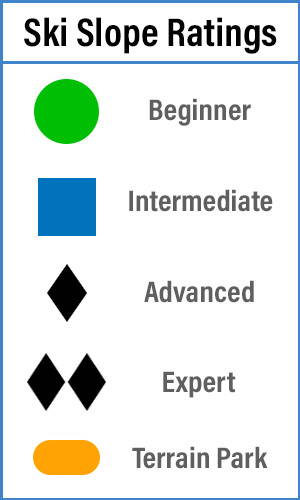

Beginners are new to the sport of skiing. They are still learning how to stay in control and maintain balance on their skis. Generally sticking to bunny hills and green runs.
Intermediate skiers are comfortable linking turns together and maintaining balance on their skis. Generally sticking to green and blue runs.
Advanced skiers have learned proper skiing techniques and have a good command of their skis. They are able to ski both on and off-piste and are comfortable at higher speeds. Able to ski most conditions and black runs
Experts ski fast and aggressively with strong technique. They are able to ski safely and in control of any type of terrain, pitch, and snow condition.
WHY THIS MATTERS
Beginner and intermediate skiers will require a ski that is easier to turn. Shorter skis are more maneuverable, so beginners will prefer a ski on the shorter side. Shorter skis are easier to control but are less stable at high speeds. Something from chin to nose length is suggested for beginners/intermediates.
Advanced and expert skiers, especially those who enjoy skiing fast and in variable conditions, may prefer a longer ski. Something between the eyes and the top of the head. Some experts may even prefer a ski that is taller than they are, especially if the skis have a rocker. Rockered skis have a smaller contact surface (where the base of the ski touches the snow) so skiing them at longer lengths is often recommended.
STYLE OF SKIING
You may want a longer ski if …
- YOU SKI FAST, AGGRESSIVELY, AND STRONGLY.
- YOU LIKE TO SKI OFF-PISTE, BIG MOUNTAIN, AND BACKCOUNTRY TERRAIN.
- YOU’RE BUYING RACKERED AND/OR TWIN TIP SKIS.
- YOU ARE AN EXPERT SKIER AND KNOW WHAT YOU WANT.
You may want a shorter ski if ...
- YOU LIKE TO CARVE IT UP WITH SHORT, TECHNICAL TURNS.
- YOU’RE LEARNING TO SKI (BEGINNER/INTERMEDIATE).
- YOU’RE BUYING A SKI WITH TRADITIONAL CAMBER
How to Ski in All Conditions
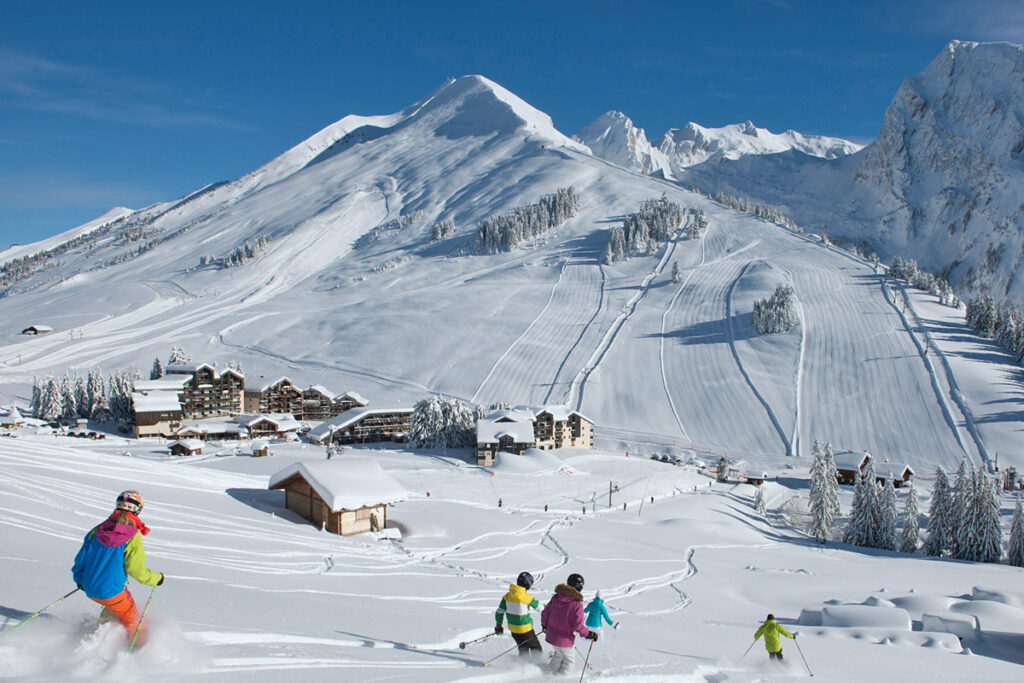
Everyone dreams of a magical day of floating down the mountain, cutting turns on perfectly groomed runs, and billowing through fresh powder. Unfortunately, snow conditions don’t always measure up to your dreams.
But don’t worry! The following techniques and tips will help you tackle various snow types. There are also gear recommendations to make gliding through even the most challenging conditions a whole lot easier. Of course, lessons are always a great option if you want to get some “hands-on” experience and pointers as you go.
Ice
Let’s say that the term “hard pack” is too generous and there’s no mistake that you’re skiing on ice. For skiers, it’s easy to tense up and keep your weight on your heels, but this will only result in losing more control on your turns. Instead, put your hands up and stay forward in your stance, leaning downhill on turns to evenly weigh your skis and to prevent the uphill ski from slipping out from under you. Although you want to use your edges to make turns on ice, you should make shorter, quicker turns and refrain from keeping your edges on the surface for an extended period.
Snowboarders, keep your weight centered on the middle of your feet with knees bent rather than putting too much weight in your heels or toes. Let your board slide with the
Best gear: Stiff slalom skis with narrow cut work best in these conditions. Stiff all-mountain board with edges sharpened to 90 degrees.
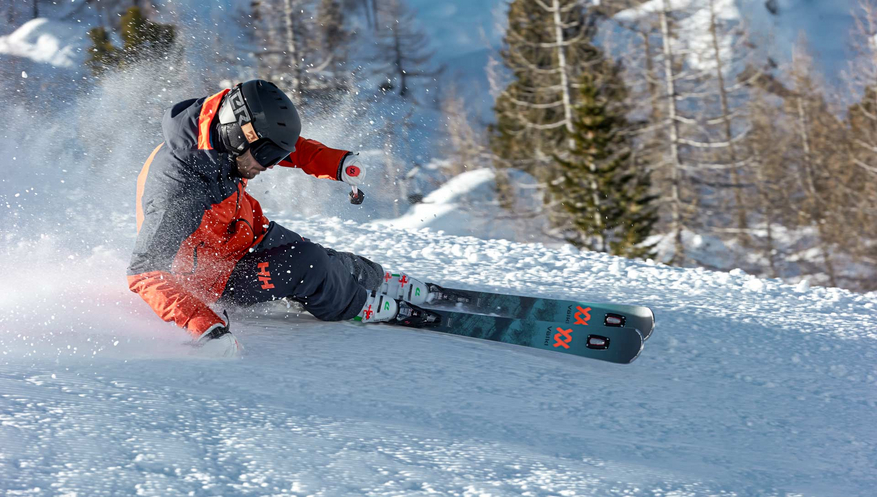
Heavy Snow
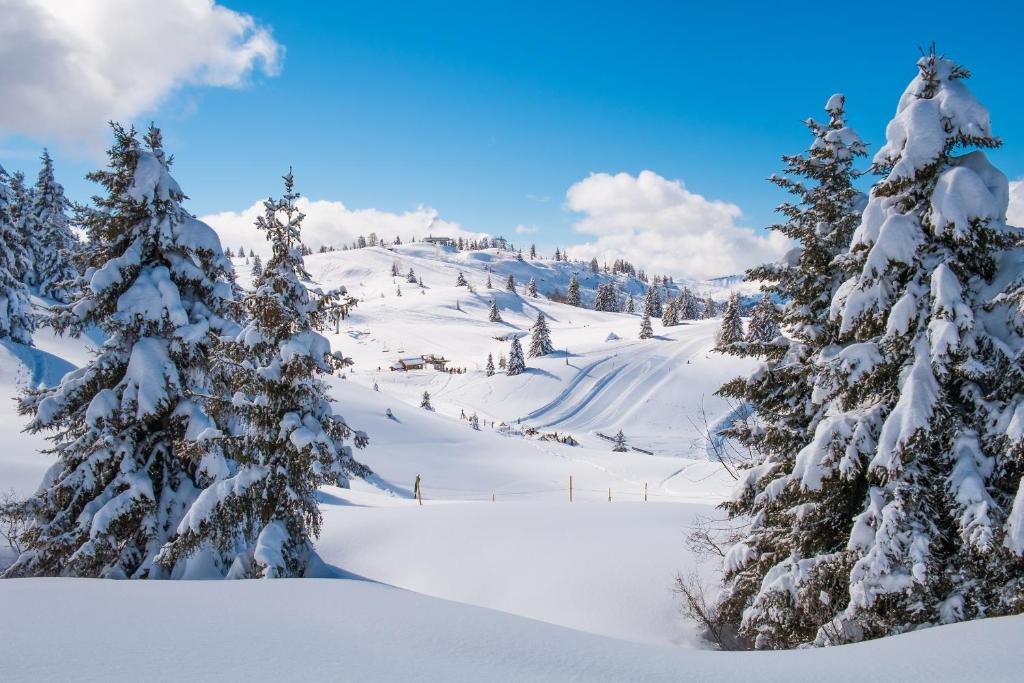
There are many names for this type of snow—including “peanut butter” and “wet cement”—none of which sound appealing. While it might not seem like the most inviting consistency to glide through, fighting half-frozen, thick snow will only make things harder on yourself.
Staying light on your feet with your weight centered is the best way to cope with choppy, inconsistent conditions. You might hit a soft spot one minute and a half-baked block the next. Keeping pressure on the front of your boots, knees bent and hands forward will never be more important.
Best gear: When you’re working with heavy snow, go with fat skis with a rocker, or a stiff powder board with a slight rocker.
Slush
When the sun is shining and warm spring temperatures out in force, the snow takes a turn for the wet and heavy and if you use the right techniques, you’ll have a blast in the slush.
The first thing you have to become comfortable with is sliding around and moving with your skis or board. There’s no holding an edge in this stuff, so be prepared to swing wide on your turns. Keep your weight forward, hands up, and make short, quick turns.
Best gear: Try powder skis with a rocker or a semi-flexible board with a rocker camber when the temps are warm and the snow is slushy.
